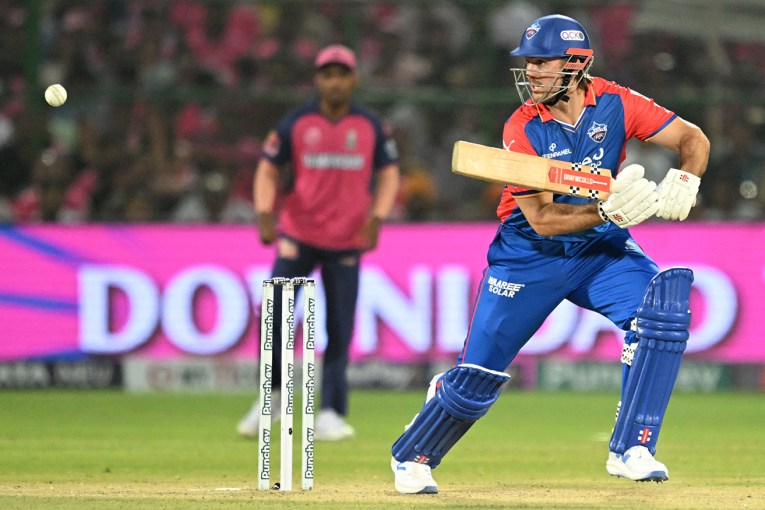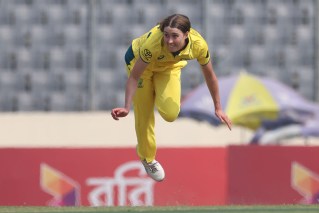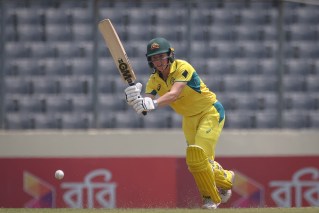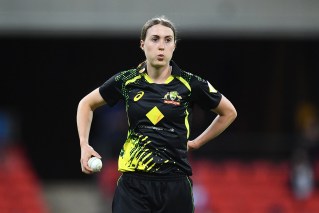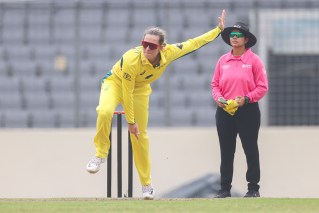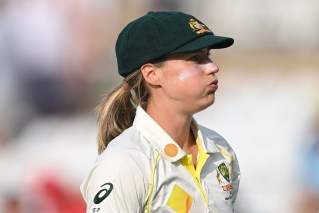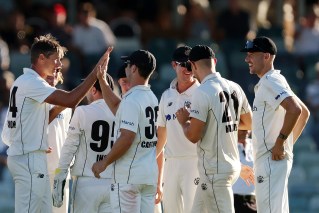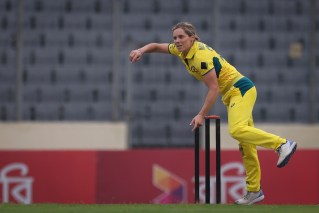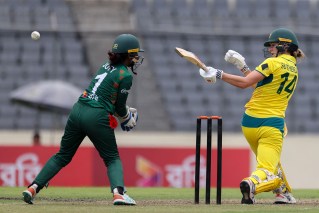World Cup: who has the biggest weapon?
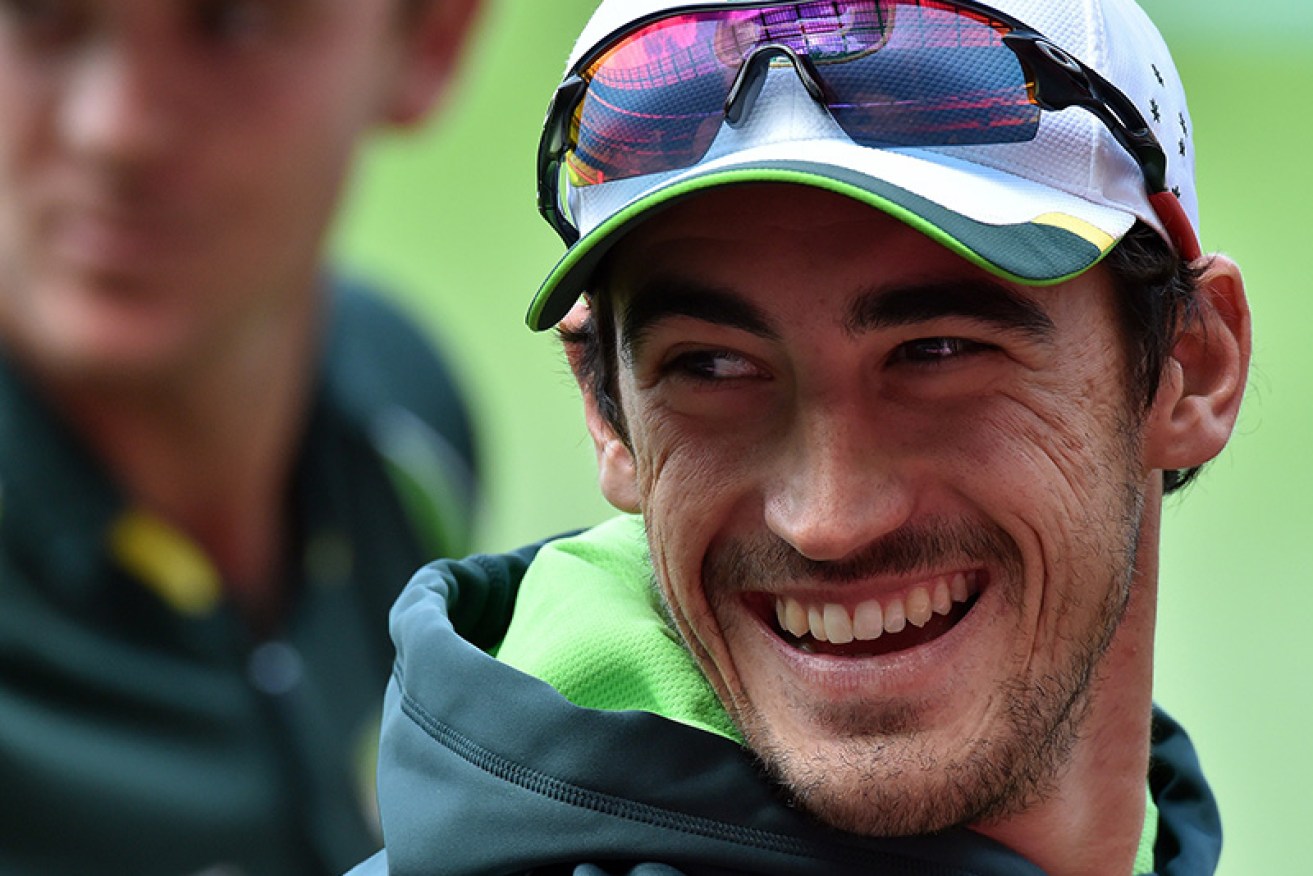
There has been no place like home for Australia and New Zealand on their respective paths to the World Cup final but just one of the co-hosts will enjoy that particular advantage when they meet in today’s title decider.
After 48 one-day internationals played out over six weeks between 14 teams from five continents, the 11th version of cricket’s showpiece tournament comes down to a trans-Tasman tussle at the Melbourne Cricket Ground.
• Michael Clarke retires from ODIs
• Hoggy: let’s go back to the scene of the crime
• Clarke: trans-Tasman final “extremely special”
• India came and saw, but Australia conquered
• Aussies advance to World Cup final
• Video: Reporter probes Clarke’s sex life
Australia, playing its seventh final, has all the cricketing pedigree and its four previous titles make it by far the most successful nation in World Cup history.
New Zealand has indisputably been the form team of the tournament, with the Black Caps’ eight-match unbeaten romp to their first World Cup final including a victory over the Australians at Eden Park.
Now, though, they have left New Zealand for the first time in the tournament to play their first one-dayer at the MCG in six years in front of a hostile crowd of up to 100,000.
In its last 12 one-dayers at the MCG going back five years, Australia has won all but two and is unbeaten at the ground in its last six encounters.
Battle of searing seamers will be critical

Mitchell Starc … a weapon we need firing. Photo: Getty
Crucial to New Zealand’s chances of lifting a first World Cup is, perhaps, how their potent new-ball attack of Trent Boult and Tim Southee handle the change of conditions on the drop-in wicket.
Interestingly, New Zealand has bowled first in all but two of its eight games at this World Cup, while Australia has batted first in all but two of its seven matches.
Consensus has it Boult and Southee will get less of the swing they have used to such devastating effect back home and will have to adjust the length of their deliveries.
Australia expects that to play to its advantage the same way New Zealand benefited in the one-wicket victory at Eden Park – the only defeat for Michael Clarke’s side.
“I think the fact that the conditions are different will certainly help us, and we’ve played a fair bit of cricket throughout the summer at the MCG as well,” Clarke said after the semi-final win at the Sydney Cricket Ground on Thursday.
Tale of the tape: AUS v NZ
| AUS | World Cup 2015 | NZ |
|---|---|---|
| 7 | Games played | 8 |
| 322.8 | Avg runs (batting first) | 312 |
| 6-417 | Highest score | 6-331 |
| 9.9 | Wickets taken/innings | 9 |
| 201.9 | Avg opposition score | 206.8 |
“Conditions are a lot different to what New Zealand have been playing in New Zealand. But in saying that, I think we’re going to have to play our best cricket, there’s no doubt about it.”
Southee, though, thinks New Zealand’s bowlers have shown they can prosper even when they do not get much movement.
“It hasn’t swung for us in every game but we’ve found ways to take wickets so I think that’s the beauty of our attack,” he told reporters in Melbourne on Friday.
Australia has a potent bowling attack of its own in the rampant Mitchell Starc and Mitchell Johnson, with Johnson looking close to his best with two key Indian wickets in the semi-final.
If the seamers battle each other to a draw and the spinners are the difference, New Zealand should feel confident.
The Black Caps boast wily veteran Daniel Vettori (305 ODI wickets with an economy rate of 4.12), while Australia mostly relies on part-timer Glenn Maxwell (33 wickets and 5.47 ER).
No score out of reach for potent batting line-ups

Corey Anderson can do anything with the bat. Photo: Getty
It has largely been a World Cup more notable for batting, though, and both sides have quality all the way through their line-ups.
The fearless aggression shown by New Zealand openers Brendon McCullum and Martin Guptill has been a sight to behold for cricket lovers everywhere.
And if there was any doubt about New Zealand’s ability to deal with pressure, they can point to two tight victories won with sixes – first Kane Williamson against Australia and then Grant Elliott in Tuesday night’s semi-final against South Africa.
Williamson is yet to hit his straps in this tournament, but he is an undeniably skilled middle-order batsman, and the same can be said of veteran Ross Taylor.
The sheer power of Corey Anderson, who lays claim to the second-fastest ODI century in history (off just 36 balls in January last year), and Australian-born wicketkeeper Luke Ronchi, with an ODI strike rate of 123.89, is a looming threat in the later overs.
For Australia, Steve Smith has been calmly racking up runs all season and, in the likes of David Warner and Glenn Maxwell, they also have the power hitters to inflate a batting total in a few short overs.
Warner’s opening partner, Aaron Finch, can be equally destructive on his day and may be back in form after a battling 81 in the semi-final against India, his first score over 24 since belting 135 in Australia’s first game against England.
Even the much-maligned Shane Watson has averaged 61 since returning to the team after getting dropped for the clash with Afghanistan.
Australia also boasts big hitting aplenty down the order, with James Faulkner, Brad Haddin, Mitchell Johnson and even Mitchell Starc capable of a demoralising late-game flurry of runs.
Reuters/ABC
